Port of Rotterdam Names Siemons Interim CEO

Boudewijn Siemons will become interim CEO of the Port of Rotterdam Authority effective July 15, 2023, taking the reins from Allard Castelein, who is stepping down as CEO this summer after nearly a decade in the position.Siemons, who currently serves as the port's COO, will combine both positions until a new CEO has been appointed.In addition, Vivienne de Leeuw will stay on as CFO. Her term of office has been extended by four years.Miriam Maes, chair of the Supervisory Board, said, "The process of finding a new CEO is still in progress.
US Navy: Building Small Combatants to Create Force Structure and Capability
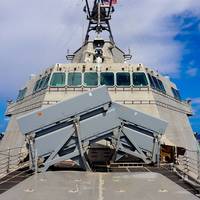
The U.S. Navy needs more ships. And that means the Navy has to build more ships than it is decommissioning.The sea service has a stated a goal of 355 ships, and as many as 500 and more when unmanned platforms are counted. There are 298 ships in the fleet today. For surface ships, this number includes a high-low mix of highly capable large surface combatants, and smaller ships such as littoral combat ships LCS).The Navy’s smallest combatants are the 330-ton, 197-foot coastal patrol boats (PCs). Up until recently, ten of them have been serving in the Middle East with the U.S.
Maritime History: CV1 — USS Langley was a Trailblazer

While the December 2021 edition of Maritime Reporter & Engineering News examines 'Great Ships' delivered this calendar year, Edward Lundquist takes a look back into U.S. Navy history and America's first aircraft carrier —CV 1, the USS Langley.Most people think of USS Langley as America’s first aircraft carrier — CV 1. While that’s true, and being the first flattop in the fleet is an honorable distinction, Langley began life as a collier — USS Jupiter, which itself was a relatively new concept of delivering fuel to the afloat forces where they need it. Today, the U.S.
China Builds Mockups of US Navy Ships for Target Practice

China's military has built mockups in the shape of a U.S. Navy aircraft carrier and other U.S. warships, possibly as training targets, in the desert of Xinjiang, satellite images by Maxar showed on Sunday.These mockups reflect China's efforts to build up anti-carrier capabilities, specifically against the U.S. Navy, as tensions remain high with Washington over Taiwan and the South China Sea.The satellite images showed a full-scale outline of a U.S. carrier and at least two Arleigh…
Electronic Navigational Charts: An Update and Some Issues
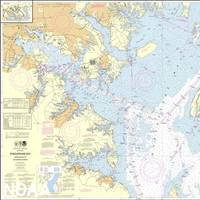
In November 2019, the Office of Coast Survey (OCS), part of the National Oceanic and Atmospheric Administration (NOAA), announced the start of a five-year program to “sunset” all raster and paper nautical charts.NOAA has produced electronic navigational charts (ENCs) since 1993. In the 2019 notice, NOAA writes that “ENC sales increased 425% since 2008, while sales of paper charts are now half of 2008 levels.”For NOAA and mariners, a focus on electronic charts and publications promises many advantages. With a singular focus, NOAA can use its resources more efficiently.
Analysis: Strait of Hormuz and the Risk of Escalation
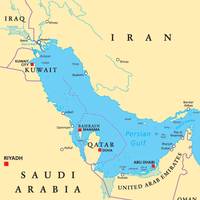
The Strait of Hormuz, the narrow shipping lane between Iran and Oman named after the fabulously wealthy ancient kingdom of Ormus, has fascinated oil traders since the Iranian revolution in 1979. Iran has periodically threatened to close the strait to enemy shipping, while the United States and its allies have pledged to keep it open and maintain freedom of navigation, by force if necessary.The strait has become a symbolic flashpoint in the region-wide confrontation and indirect…
Trump's Navy: A Look at the Future US Navy
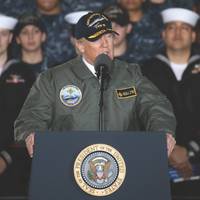
It’s still too early to know for certain what the new administration will do about building up the U.S. Navy, as the numbers are a moving target. But with President Trump’s recent pledge to add $54 billion to defense spending, it’s a safe bet to make that the fleet will grow. So let’s start with the numbers. There are different ways to count the fleet size, including whether or not you count auxiliaries, but let’s use this number as the baseline: There are 274 ships in the U.S. Navy now.
Last Port of Call for the U.S. Merchant Marine?
Part II in a two-part series, continued from the January 2017 edition of Maritime Reporter & Engineering News. Read Part I here. If reliance on the foreign commercial market is risky because of uncertain reliability, then what of U.S. Government ownership of a fleet of vessels? That has also been on the menu since the early 20th century. President Woodrow Wilson proposed in September 1914 that the U.S. Government acquire commercial cargo vessels. Congress disagreed, which delayed enactment of the President’s proposal until the Shipping Act, 1916. A compromise was struck to permit U.S. Government ownership as a war time measure – but all vessels so acquired had to be sold to private owners within five years of the end of the war.
Last Port of Call for the US Merchant Marine?
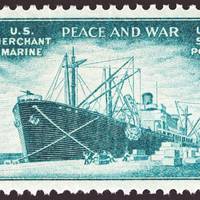
The privately owned U.S.-flag foreign trading fleet, which is an essential component of U.S. sealift capability, stands on the edge of a precipice. The fleet – roughly stable in terms of cargo carrying capacity from 2000 to 2012 – has declined from 106 vessels in 2012 to 78 vessels at October 30, 2016 primarily because of a substantial decline in available U.S. Government-reserved cargo. The size of the fleet has reached a point where the viability of the U.S.-flag industry involved in foreign trade – including its trained mariners…
China Launches New 98,000-ton Heavy-lift Mega Ship
The Guang Hua Kou, one of the world's largest heavy lift semi-submersible ships, was launched last month at Guangdong Shipyard International. At 98,000 tons, it's one of the largest vessels of its size, anywhere in the world. Though the ship is formally built for COSCO Heavy Transport, a state-owned civilian firm, it will likely be made available for the People’s Liberation Army Navy (PLAN) for peace and wartime operations, reports Popular Science. A shipping line owned by the Chinese government, Cosco Heavy Transport specializes in handling heavy cargo. “The ‘Guang Hua Kou’ will be one of the largest vessels of its type when delivered end of this year,” explained the company, in a press release.
North Korean Submarine Missing
North Korea has lost contact with one of its submarines off the east coast of the country, CNN reports citing US officials. The U.S. is unsure whether the missing vessel is adrift at sea or has sunk, officials said. US spy satellites, aircraft and ships observed as the North Korean navy searched for the missing submarine for several days, the officials said. The United States is unaware of the submarine’s current whereabouts. CNN cited three unidentified U.S. officials saying that U.S. spy satellites, aircraft and ships have been secretly watching the North's navy searching for the missing submarine for days. U.S. officials believe the submarine "suffered some type of failure during an exercise," though it's unclear if the vessel is adrift under the sea or if it sank, the report said.
China's Manmade Islands Project 'Substantial Offensive Power'
China will be able to project "substantial offensive military power" from artificial islands it has built in the South China Sea's disputed Spratly Islands within months, the director of U.S. national intelligence said. In a Feb. 23 letter to John McCain, chair of the U.S. "Based on the pace and scope of construction at these outposts, China will be able to deploy a range of offensive and defensive military capabilities and support increased PLAN and CCG presence beginning in 2016," Clapper said in the letter released this week, using acronyms for the Chinese navy and coastguard. "Once these facilities are completed by the end of 2016 or early 2017, China will have significant capacity to quickly project substantial offensive military power to the region," Clapper added.
US Coast Guard's Top Priority: Offshore Patrol Cutter
The U.S. Coast Guard’s “number one priority is the offshore patrol cutter,” the service’s commandant told the House Appropriations Homeland Security Subcommittee Thursday, reports U.S. Naval Institute. The service will be looking again at its force-mix analysis, taking into account the money appropriated for a ninth national security cutter for this fiscal year, Adm. Paul Zukunft said. He said he had “the utmost confidence” the Coast Guard will down-select to one shipbuilder this year for the offshore patrol cutter. The budget request for Fiscal Year 2017 includes $100 million for long-lead procurement for the offshore patrol cutter program. A service fact sheet said the 25 offshore patrol cutters and 58 fast response cutters will replace 90 cutters now in the fleet.
Lockheed Welcomes US Plan to Use Its Combat System for Frigates
Lockheed Martin Corp on Friday welcomed the U.S. Navy's decision to use Lockheed's integrated combat system for future frigate-class ships to be built beginning in fiscal 2019, saying it would allow greater commonality across the entire Navy fleet. "It's great news," Joe North, vice president of Littoral Ships and Systems at Lockheed, told Reuters in a telephone interview. Neither the Navy nor Lockheed provided an estimate for the value of the combat system, but North said each system accounted for less than 10 percent of the cost of the ship. The last three ships ordered by the Navy ranged in price from $345 million to $441 million. The decision will make it easier for the future frigates that will succeed the current Littoral Combat Shipsp (LCS) to work together with U.S.
Navy Awards Austal $691M for Two Littoral Combat Ships

The U.S. Navy has ordered two new littoral combat ships from Austal, the shipbuilder said in a press release today. The two orders, worth $691 million, are part of the Navy's expansion of a previous block buy contract with Austal to 10 total ships, with the option to award an eleventh ship in FY 2016. The Navy also awarded a $441 million contract to Lockheed Martin for one LCS, U.S. Naval Institute (USNI) News reported. “The Navy’s confidence in Austal’s ability to continue to…
Russia Builds Nuclear Submarine "Arkhangelsk"
Russia’s Sevmash shipyard will hold a groundbreaking ceremony for its next generation Project fifth Yasen-M multirole nuclear submarine, the Arkhangelsk, on March 19. The Yasen-class subs are touted as the most advanced nuclear-powered multipurpose underwater craft in the Russian Navy. According to local media reports, the Navy Commander Admiral Viktor Chirkov has ordered that the submarine be named Arkhangelsk. This missile carrier will become the fifth Yasen Project multirole nuclear submarine, developed by St. Petersburg's Malakhit naval design bureau. Designed by Rubin Marine Equipment Design Bureau and built by Northern Machine Building Enterprise (Sevmash shipyard)…
USCG Commandant Visits Port of San Diego
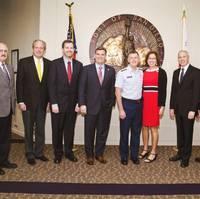
Admiral Paul Zukunft, Commandant of the United States Coast Guard, visited the Port of San Diego’s administrative offices on February 12. The Commandant was in town to participate in the 2015 Armed Forces Communications & Electronics Association /U.S. Naval Institute Conference held at the San Diego Convention Center. During his visit to the port, the Commandant participated in a briefing that included Dan Malcolm, Chairman of the Board of Port Commissioners; Acting President and CEO John Bolduc; Acting Chief of Harbor Police Mark Stainbrook and other senior Port staff members.
Third NATO Warship Enters Black Sea
A French frigate has entered the Black Sea, growing the number of NATO surface warships in the region to three, according to a U.S. Naval Institute (USNI) news report citing a ship spotting blog and Russian press reports. Surcouf (F711), a La Fayette-class frigate was spotted by amateur photographers crossing the Bosporus strait on Wednesday joining French signals intelligence ship Dupuy de Lôme (A759) and U.S. guided missile cruiser USS Vella Gulf (CG-72) – both which entered the region earlier this month. In reaction to the increased NATO naval presence in the region, Russian officials said they would begin to fly more air patrols over the Black Sea. According to USNI U.S. and NATO ships have had a rotational presence in the Black Sea since the 2014 Olympics in Sochi, Russia.
The Year in Review

The last 12 months has been one for the books ... or the trash. There was no shortage of government inducements to turn the lackluster tide in 2012—stimulus spending in China and Japan, quantitative easing by the U.S. Federal Reserve, and multiple actions by the European Central Bank to strengthen the Eurozone. But as the year evolved, weak macroeconomic fundamentals decisively trumped monetary policy initiatives and continued their choke on global commerce, hence the maritime sector.
Navy Shipyards Hit by Budget Shutdown
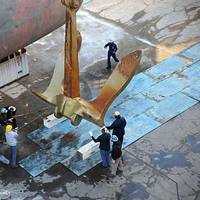
While ongoing operations involving ships at sea and forward-deployed forces are moving along as scheduled, the government shutdown is reverberating throughout the Navy, especially at its shipyards. More than 75,000 Navy civilian employees will be furloughed, according to Military.com. Citing a U.S. Naval Institute report, Military.com says that [unpaid] furloughs are slated to occur at all four of the Navy’s public shipyards, including: Puget Sound Naval Shipyard, Bremerton, Wash.…
NPS Littoral Operations Center to Focus on Global Littorals
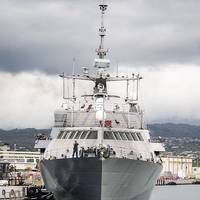
What does it take to win in the littoral? Start with knowledge. Naval warfare in littoral waters is very different from open ocean operations. The U.S. Navy is dominant in “blue water” scenarios, but less so in the littoral, naval experts say. “We are good at blue water operations, but we are not that skilled in fighting and operating in the littoral waters in places like the South China, the Baltic and Black Seas as well as the Persian Gulf,” said Prof. Wayne Hughes, a retired U.S.
Thad Allen at the Helm

Former USCG Admiral Thad Allen is a transformational leader in the history of the service, a rock through thick and thin. Today he talks about resource allocation, risk management and homeland security. As part of Booz Allen Hamilton’s Justice and Homeland Security business group, Executive Vice President and former U.S. Coast Guard Admiral Thad Allen leads the development of thought leadership and client engagements regarding the future direction of law enforcement and homeland security. The Coast Guard is under pressure to either pare its mission mix or downscale what it does.
Sweden Shares Littoral Knowledge
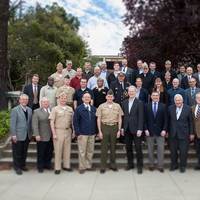
Swedish Navy working with U.S. Naval experts are meeting in Monterey, California, this week to discuss something the Swedish armed forces know quite well: naval operations in the littoral or near coastal waters are very complex. Littoral warfare is very different from open ocean operations. The U.S. Navy is looking to the experience and expertise of the Swedish navy to operate, fight and prevail in this environment. The Naval Postgraduate School (NPS)in Monterey has established…





